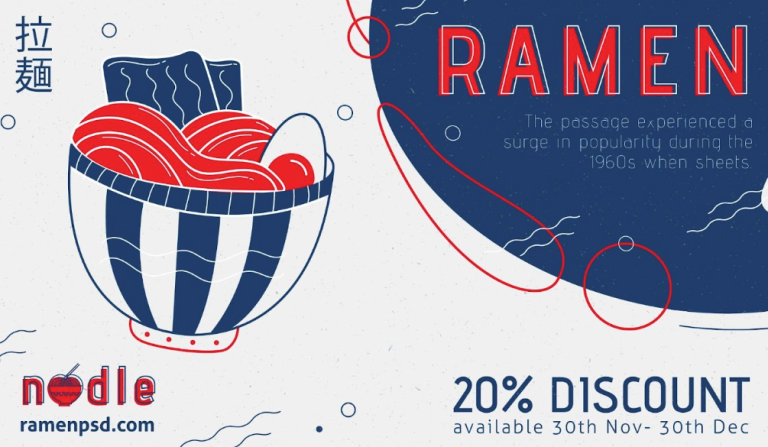Introduction
Sustainability is now part of purchasing decisions for many shoppers. When noodle brands choose packaging that cuts waste without compromising protection, they gain credibility and repeat buyers. But going green is not automatic: the right eco friendly noodle packaging must protect the product, be practical in shipping, and be verifiable in its claims. This article outlines realistic sustainable options and how to evaluate them so your brand reduces impact and keeps noodles fresh.
Start with the right sustainability goal
Sustainability means different things to different brands: lower carbon footprint, recyclable materials, post-consumer recycled (PCR) content, or compostability. Decide which goal aligns with your customers and operations. That clarity guides material selection and supplier conversations.
Custom noodle packaging can address several goals at once, but be honest about trade-offs. The primary function, keeping the noodles intact and dry, cannot be sacrificed for sustainability claims.
Mono-material films for recycling compatibility
One of the most practical moves is switching to mono-material films that are recyclable together. Traditional multi-layer laminates have excellent barrier properties but are difficult to recycle. Mono-material solutions use a single polymer layer engineered to offer decent barrier performance while being recyclable in existing streams.
For many dried noodle formats, mono-material films can deliver adequate protection and dramatically improve recyclability. Verify local recycling capabilities and tell customers how to dispose of the pack correctly. Clear instructions on the package reduce contamination in recycling streams.
Post-consumer recycled (PCR) content
Using PCR content reduces virgin plastic use and can be integrated into film production. PCR films provide a balance between environmental benefit and barrier performance. They often have a slightly different visual texture, which can even work in brands favoring an earthier aesthetic.
When you specify custom noodle packaging with PCR content, ask for certification and transparency on the percentage of recycled content. Consumers respond to specific numbers rather than vague claims.
Compostable options where they make sense
Compostable films and papers look great on wellness-oriented packaging, but they require careful handling at end-of-life. Industrial composting facilities are needed for many compostable materials to break down properly. If your customer base lacks access to industrial composting, compostable packaging can end up in landfill where it does not degrade as intended.
Compostable options can work for single-serve packs or niche markets where you educate customers on proper disposal. But always validate barrier performance and be explicit about disposal instructions on the pack.
Reducing material through design and refill strategies
Less material equals less waste. Lightweighting, the practice of reducing thickness of films and minimizing unneeded layers, lowers material use and shipping weight. Design choices like flat-pack refills that customers pour into reusable jars can dramatically cut packaging waste while keeping product quality high.
Consider a program where customers buy a durable jar once and receive refills in lightweight pouches. This model reduces per-use packaging and builds a repeat purchase cycle tied to sustainability.
Paper-based and fiber packaging options
For certain noodle types, especially dry artisan shapes, paper-based pouches with inner barrier liners can be an attractive option. Kraft paper conveys a natural feel and can be recyclable if the inner liner is compatible or easily removable.
When using paper, ensure the barrier liner protects against humidity. For some applications, a thin bio-based liner inside a paper wrap hits the right balance between shelf performance and perceived sustainability.
Supply chain and lifecycle analysis
Sustainability claims should be backed by lifecycle thinking. Sometimes heavier paper with lower recyclability can have a higher footprint than a thinner, recyclable plastic film. Work with suppliers to get data on carbon footprint, recyclability, and end-of-life performance.
A simple lifecycle analysis can reveal where the biggest gains are: material change, reduced transport weight, or refill programs. Use that data to prioritize impactful changes.
Certifications and transparent communication
Consumers are skeptical of vague green claims. Use recognized certifications and clear labeling to build trust. If you use PCR content, show the percentage. If your film is recyclable in curbside programs, state the recovery stream. If it needs industrial composting, explain where that is available.
Custom noodle packaging that communicates honestly converts skeptical shoppers into brand advocates.
Pilot, measure, and scale
Start with a pilot SKU and measure return rates, in-transit damage, and consumer feedback. Track recycling contamination or support queries related to disposal. Use the pilot to refine material choices and instructions before moving to larger runs.
Scaling sustainability often reduces unit costs, making greener options more viable as volumes grow.
Conclusion
Eco friendly noodle packaging is achievable when you pair realistic materials with honest communication and rigorous testing. Mono-material films, PCR content, lightweighting, and refill strategies each offer gains. The key is to protect the product first and reduce waste second. When sensitivity to performance and sustainability align, your brand cuts environmental impact and strengthens customer loyalty. Choose changes that you can verify and explain clearly, customers will notice, and the planet benefits too.

